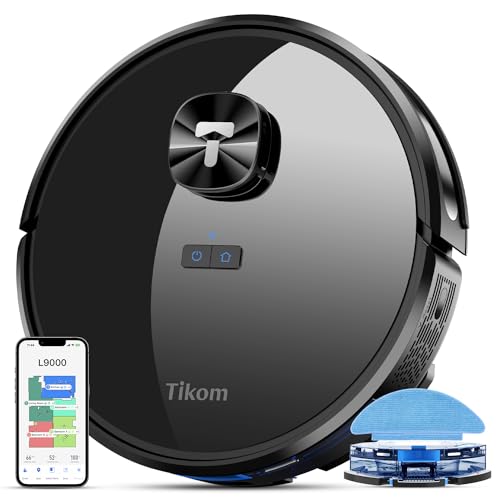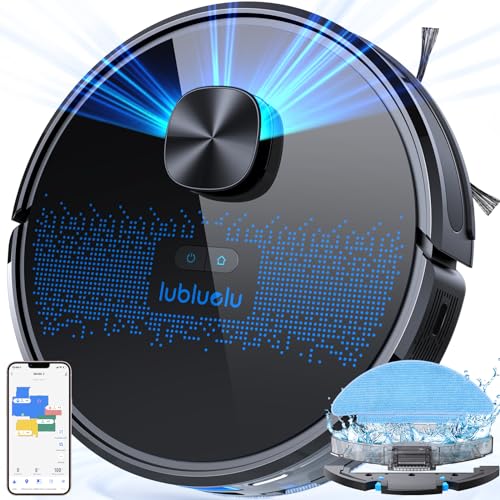Speak "Yes" To These 5 Robot Vacuum Cleaner Lidar Tips
페이지 정보
작성자 Leta 작성일24-08-06 10:47 조회57회 댓글0건관련링크
본문
 Robot Vacuum Cleaner Lidar Navigation
Robot Vacuum Cleaner Lidar NavigationRobot vacuum cleaners have become a vital part of the smart home landscape. Lidar is an essential element in transforming robotic vacuum cleaners from basic machines to intelligent, flexible housemates.
Light Detection Ranging (Lidar) technology helps robots navigate around obstacles and avoid obstacles. In this article, we'll examine how it can improve navigation for robot vacuum cleaners.
Precise Mapping
As opposed to navigational technologies such as gyroscopes or cameras, which require the robot to be in contact with objects in the room, lidar provides a much more precise map of the space and makes it easy to navigate systematically. This means that robots outfitted with this technology are able to better avoid obstacles and ensure that the entire space is kept clean.
This mapping feature is usually displayed in an application so you can view the robot's location at any moment and how it navigates through your home. With this visualization, you are able to easily create no-go zones in certain areas, like furniture or stairs, and then adjust your cleaning schedule to accommodate. The app allows you to observe how the mapping process develops and also if your robot has detected any changes in the environment.
The most advanced robots equipped with mapping capabilities utilize SLAM to create a 3D model of the space and create efficient cleaning paths based on. The system is typically recognizable by the way that vacuums move around your home. It is able to move more efficiently and logically, instead of ping ponging or battling to hold onto edges and corners.
Lidar and SLAM may be expensive however they provide an astounding level of precision, autonomy and flexibility when it comes to robot vacuuming. This is the technology to look for if you want to get a thorough clean in every room of your home.
It's important to note that other technologies can offer similar functionality for less cost. The less expensive alternatives include gyroscope-based and camera-based navigation systems.
Neabot Dreame F9 is a good example of a robot vacuum that has accurate mapping. This model uses both SLAM and cameras to find and avoid obstacles while cleaning your home. It is also able to identify carpets and increase suction power automatically, making it suitable for daily maintenance tasks. The application lets you set up no-go zones and schedules, as well as track the progress of the device from any place in the world.
Real-Time Obstacle Avoidance
One of the most frequently-cited complaints about vacuum robots is the tendency for them to get stuck on cords and other small objects. This issue is virtually eliminated thanks to the advanced obstacle detection abilities of lidar navigation. Lidar mapping robots can identify wires, furniture pieces and other obstacles in real time and navigate around them with ease, ensuring a more thorough cleaning process.
It works by emitting laser beams that reflect off surfaces and other objects in the room. The sensor is able to measure the time it takes the laser beam to return to the robot. This gives it an idea of what is lidar navigation robot vacuum's in front of it. By analyzing data an automated system can create a detailed map of the surrounding area in real-time.
Many robots use this information to plan out efficient cleaning routes and avoid areas that have furniture or obstacles, and making sure that the entire space is covered. This technology also improves battery efficiency, reducing the amount of energy needed to power the robot, allowing it to run longer on just one charge.
Contrary to other robot vacuum technology that use ultrasonic sensors which measure the frequency of sound to detect obstructions, lidar works in low-light conditions, making it an effective navigation method. The color of an object, however, can impact how well the robot is able detect it. A white cable on a dark wall or floor may be more difficult to spot than a black cable.
Making your home ready for a robotic cleaning session is a good idea. This includes cleaning up small objects you do not want be swept (such as toys) and making sure that all cords, such as those for window blinds, or the power cord to your refrigerator are tucked away. Also, make sure the sensor on the robot is clear of debris and dust, as this can interfere with its performance. Refer to your robot's user manual or contact customer service for tips on how you can improve its navigation.
Reduced Collision Risks
A robot equipped with lidar sensors can create a detailed map and identify small objects that other sensors could miss. This allows robots to navigate more effectively around obstacles and reduce collisions. It also allows robots to create more systematic cleaning patterns that ensure every area of the house is cleaned which is an enormous improvement over random cleaning.
However, it's important to remember that a robotic vacuum equipped with lidar is unable to detect all obstructions. It is still unable to detect on wires that are plugged into appliances but are not properly grounded. The sensor may be confused by the contrast between the light cable color and the wall or floor. A cord that is encased in furniture could also cause interference.
A robot equipped with lidar however, is a significant improvement over earlier technology. It provides navigation capabilities previously impossible to imagine. Therefore, we highly recommend that you select an advanced robot technology of navigation.
Lidar (Light detection and ranging) makes use of lasers to send pulses of light across the space. The sensors then measure the time it takes for the pulses to return and translate this information into a 3-D virtual map of the space. This is a major improvement over other methods, like gyroscopes, which can aid in preventing the robot from hitting things but are not as efficient in creating a full map of the room.
Lidar can also increase the efficiency of robots in cleaning routes by allowing them to adapt in real-time to changing environments. If you move furniture around your home for instance the sensors will adjust the maps in real-time to reflect the new configuration.
One downside of the use of Lidar to guide the robot vacuum is that it is often more expensive than those using simpler navigation systems like gyroscopes or SLAM. If you're on a tight budget, there are many excellent robot vacuums which don't utilize lidar. They still provide superb navigation. It's your responsibility to decide if the extra cost is worth the investment for the benefits that this technology can provide.
Enhanced User Experience
The capabilities of navigation for robot vacuums lidar offer an effortless and user-friendly experience. They provide precise mapping, real time obstacle avoidance and reduce collision risk. Unlike the previous generation of robots that relied on simple sensors such as infrared, bumpers or cameras to navigate lidar mapping technology, lidar mapping technology helps robots design efficient cleaning routes and cover large areas of space.
A robot that is equipped with the technology can set virtual boundaries in the app that prevent it from causing damage to walls or furniture or navigating around wires and cables that could create a dangerous mess the bot. If the vac comes across these boundaries and crosses them, it will use the real-time map to find a way to circumvent them without supervision or intervention.
Lidar helps robots optimize cleaning paths to complete more tasks in a single session. This increases battery efficiency, and allows you to clean your apartment or home in less time. Additionally, with the ability to spot obstacles that are in the area around the wheels of the robot, Www.robotvacuummops.com an instrument equipped with lidar is better able to move around small objects, intricate furniture arrangement and low-lying barriers that may be difficult for other sensors to detect.
The integration of Lidar sensors into robot vacuums is a game changer in advanced features and functions. They include multi-room scheduling and automatic bin emptying mopping, and object recognition. self-cleaning. These new tools are designed to help save time energy, effort and energy while providing a consistent high quality clean.
 It's important to consider your budget and lifestyle when deciding which robot to buy. A robo vac that uses SLAM and Lidar is more expensive than one that uses basic navigation technology. However, it will be able perform the task quicker and more efficiently than the older models that make use of gyroscope and camera sensors.
It's important to consider your budget and lifestyle when deciding which robot to buy. A robo vac that uses SLAM and Lidar is more expensive than one that uses basic navigation technology. However, it will be able perform the task quicker and more efficiently than the older models that make use of gyroscope and camera sensors.댓글목록
등록된 댓글이 없습니다.
